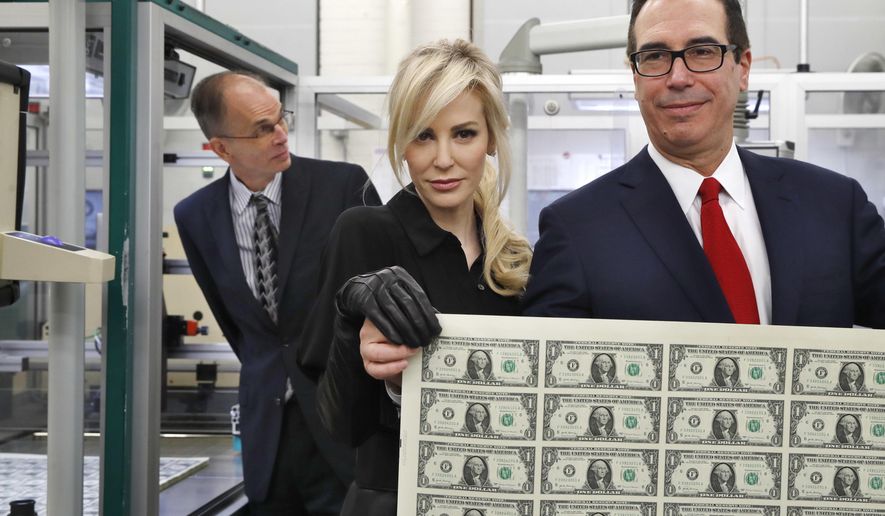The federal government is already deep in the red just two months into the new fiscal year, with the Treasury Department announcing Thursday that the deficit surged more than 50 percent so far.
The total damage stands at $305 billion, with about $100 billion of that coming in October and $205 billion added to the deficit last month alone.
Revenue is down slightly while spending has soared, according to Treasury’s figures.
The Congressional Budget Office, in an analysis earlier this week, said the spending numbers are somewhat inflated because of the timing of payments to avoid a weekend. But even accounting for those shifts, outlays would have still risen significantly.
Deficits are expected to reach nearly $1 trillion by the end of the fiscal year, up from $666 billion last year.
“The deficit has never been this high when the economy was this strong,” the Committee for a Responsible Federal Budget said in a new analysis Thursday.
Democrats say the big problem is the GOP’s 2017 tax cuts, which they say sapped money from the government, widening a hole that’s existed for nearly two decades.
“We know what most of the answers are. Part of it’s rolling back some of the tax cuts,” said Rep. John Yarmuth, the Kentucky Democrat who likely will be House Budget Committee chairman next year.
But Republicans say the problem is spending, which has grown over the last few years as President Trump has led a spree on both the defense and domestic sides.
The CBO on Thursday released a new report detailing the kinds of steps it might take to tame the debt, and the numbers made clear it will take significant pain.
If lawmakers simply want to keep debt held by the public at its current level, which is 78 percent of gross domestic product, they’d have to raise taxes, cut spending or some combination to the tune of $400 billion in 2019 alone, and keep at it — adjusted up for inflation.
Without changes, debt will rise to 96 percent of GDP by 2028, the CBO said.
The report said that slowing the growth of entitlement programs, which account for the biggest spending increases, will require big changes.
For example, raising the eligibility age for Medicare from 65 to 67 would save $15 billion to $22 billion between 2023 and 2028, and raising the full retirement age for Social Security from 67 to 70 for younger workers would save $28 billion over 10 years, it said.
That’s far short of the trillions of dollars needed to tread water over that period.
On the discretionary spending side, eliminating NASA’s human space exploration programs would save $89 billion between 2020 and 2028, and completely eliminating the Federal Transit Administration would save $87 billion between 2021 and 2028.
If lawmakers wanted to tackle the tax side, increasing the corporate tax rate by 1 percentage point translates to $96 billion over 10 years.
Democrats are considering increases, saying the country can’t afford the cut — from 35 percent down to 21 percent — that Republicans authored in last year’s tax code overhaul.
Mr. Yarmuth said that lawmakers should also boost funding for the IRS so the tax-collecting agency can pursue the billions in estimated taxes that aren’t paid.
“There are things you can do that reduce the deficit that don’t incur or impose a lot of pain on people,” he said. “That’s what we ought to be looking for - that’s the easy stuff.”
CBO estimated that boosting the IRS’s enforcement initiatives would net about $35 billion over 10 years.
• Stephen Dinan can be reached at sdinan@washingtontimes.com.
• David Sherfinski can be reached at dsherfinski@washingtontimes.com.




Please read our comment policy before commenting.